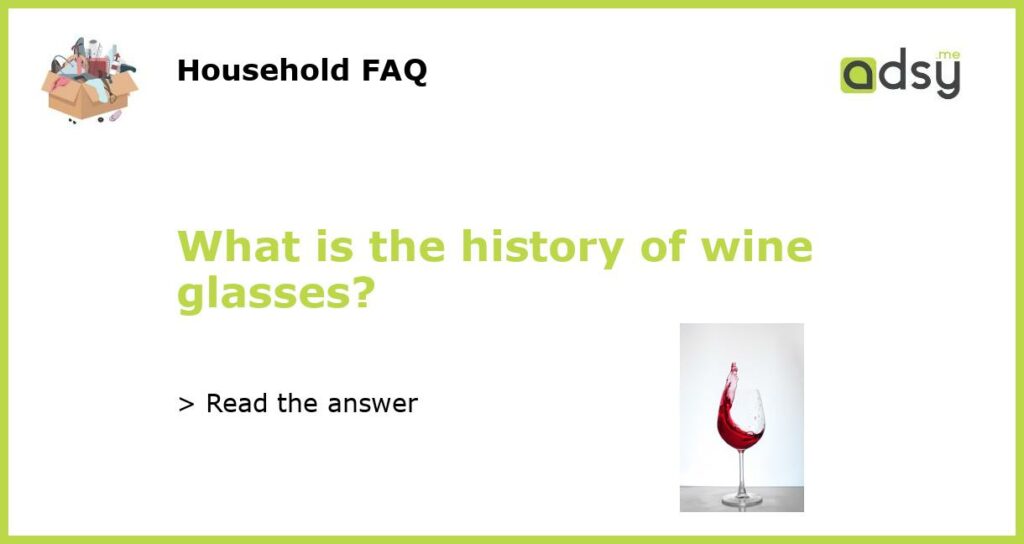The Origins of Wine Glasses
Wine has been enjoyed by humans for thousands of years, and the history of wine glasses can be traced back to ancient times. The earliest evidence of wine consumption dates back to around 6000 BC in what is now modern-day Iran. As wine became an important part of ancient cultures, so too did the vessels from which it was consumed.
Ancient Wine Cups and Containers
In ancient times, wine was often stored and consumed from ceramic vessels or bowls. These containers were often decorated with intricate designs and symbols, showcasing the importance of wine in these ancient civilizations. However, drinking directly from these vessels was not practical, as they were large and often lacked handles.
Around 2000 BC, the ancient Egyptians started using goblets made of precious metals such as gold and silver to drink their wine. These goblets were often encrusted with gemstones and featured elaborate designs. Wine was considered a luxury item, and the vessels used to consume it reflected this status.
The Evolution of Wine Glass Designs
With the fall of the Roman Empire, the production of glass declined in Europe. However, during the Renaissance period in the 15th century, glassmaking techniques were revived and improved. This led to the creation of more sophisticated and refined glassware, including wine glasses.
Initially, wine was consumed from shallow, wide-rimmed glasses similar to those used in ancient times. However, as the appreciation for wine grew, so did the desire for glassware that would enhance the drinking experience. This led to the development of more specialized wine glasses with unique shapes and features.
The Impact of Glassblowing Techniques
Glassblowing, a technique invented by the Romans, revolutionized the glass industry. This technique allowed for the creation of glassware with thinner walls and more intricate shapes. It also made it possible to create stemware, such as wine glasses, that could be easily held without affecting the temperature of the wine.
During the 18th century, the shape of wine glasses continued to evolve. Wine glasses with longer stems and narrower bowls became popular, as they allowed for better swirling and aerating of the wine. This enhanced the aroma and flavor of the wine and became an important aspect of the wine-drinking experience.
Modern Wine Glass Designs
In the 20th century, wine glasses continued to evolve and adapt to the changing trends in the wine industry. Different wine varietals were found to have unique characteristics that could be enhanced by specific glass shapes. This led to the development of specialized wine glasses for red wines, white wines, and sparkling wines.
Today, there is a wide range of wine glass designs available, each designed to maximize the flavors and aromas of specific wine styles. From the classic tulip-shaped Bordeaux glass to the fluted Champagne flute, wine glasses have become an integral part of the wine-tasting experience.
The history of wine glasses is a testament to the enduring love and appreciation for wine throughout human history. From the humble ceramic bowls of ancient civilizations to the exquisite crystal glassware of today, wine glasses have evolved to enhance the enjoyment of this beloved beverage.






